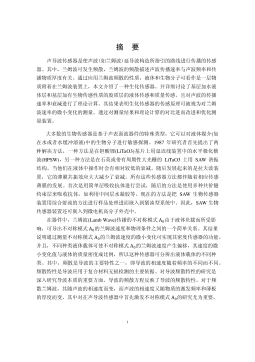Contents
Acknowledgements .......................................................................................................... i
ABSTRACT .....................................................................................................................ii
摘 要 ............................................................................................................................. iv
Chapter One Introduction ..............................................................................................1
1.1 Background of the Research ............................................................................... 1
1.2 Significance of the Research ...............................................................................2
1.3 Organization of the Thesis .................................................................................. 4
Chapter Two Literature Review .................................................................................... 6
2.1 Rhetorical Criticism ............................................................................................ 6
2.1.1 Development of Rhetorical Criticism .......................................................... 6
2.1.2 Application of Dramatistic Criticism ...........................................................7
2.2 News Discourse Analysis ....................................................................................8
2.2.1 Previous Approaches to News Discourse Analysis ......................................8
2.2.2 A Comment on Previous Approaches to News Discourse ......................... 11
2.3 Summary ........................................................................................................... 12
Chapter Three The Model of Dramatistic Criticism ................................................. 13
3.1 Defining Dramatistic Criticism .........................................................................13
3.2 Theoretical Bases of Dramatistic Criticism ...................................................... 14
3.2.1 A Humanistic View .................................................................................... 14
3.2.2 A Linguistic View ...................................................................................... 16
3.2.3 Summary .................................................................................................... 18
3.3 Operation of Dramatistic Criticism ...................................................................19
3.3.1 Defining Pentadic Analysis ........................................................................19
3.3.2 Pentadic Ratios and Argument ...................................................................21
3.3.3 Pentad and Terministic Screen ................................................................... 23
3.3.4 Pentad and Identification ........................................................................... 25
3.3.5 Summary .................................................................................................... 27
Chapter Four Analyses of Foreign News Reports on the 3·14 Tibet Riot ................29
4.1 Writing of News Reports .................................................................................. 29
4.2 Sample Analyses ............................................................................................... 30
4.2.1 Sample One ................................................................................................ 31
4.2.1.1 A General View of the Report .............................................................33
4.2.1.2 Pentadic Analysis of the Report .......................................................... 34
4.2.1.3 Terministic Screens and Identification ................................................39
4.2.1.4 Conclusion .......................................................................................... 42
4.2.2 Sample Two ................................................................................................43
4.2.2.1 A General View of the Report .............................................................45
4.2.2.2 Pentadic Analysis ................................................................................ 46
4.2.2.3 Terministic Screens and Identification ................................................50
4.2.2.4 Conclusion .......................................................................................... 53
4.3 A Comparison Between the Two Samples ........................................................ 54

 2024-10-14 53
2024-10-14 53
 2025-01-09 12
2025-01-09 12
 2025-01-09 21
2025-01-09 21
 2025-01-09 29
2025-01-09 29
 2025-01-09 10
2025-01-09 10
 2025-01-09 19
2025-01-09 19
 2025-01-09 9
2025-01-09 9
 2025-01-09 37
2025-01-09 37
 2025-01-09 11
2025-01-09 11
 2025-01-09 13
2025-01-09 13










